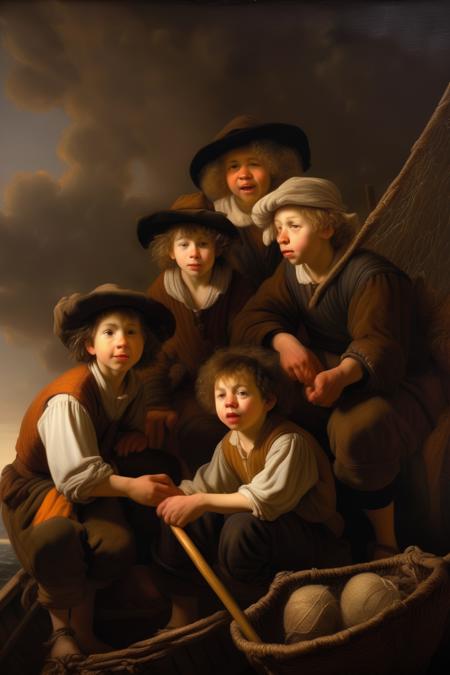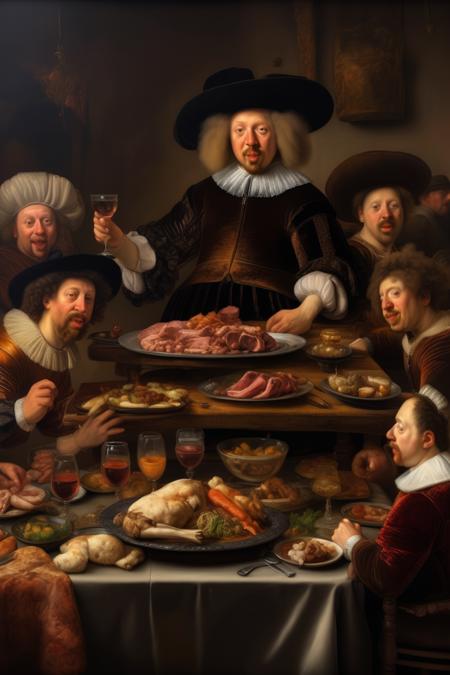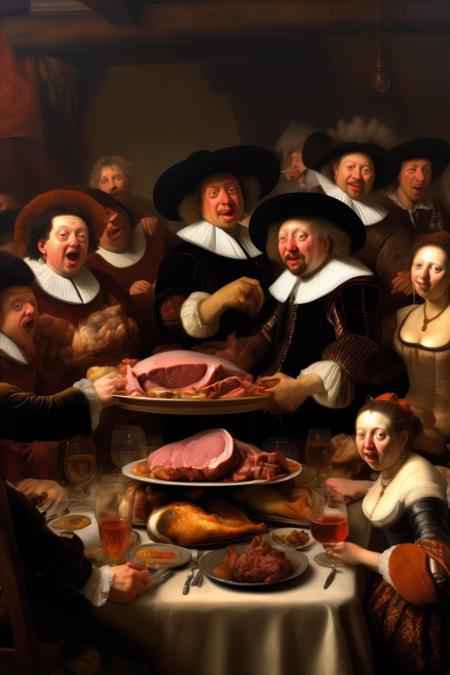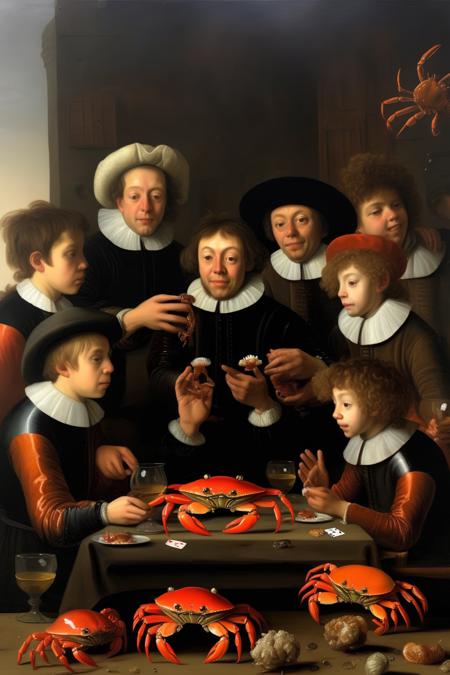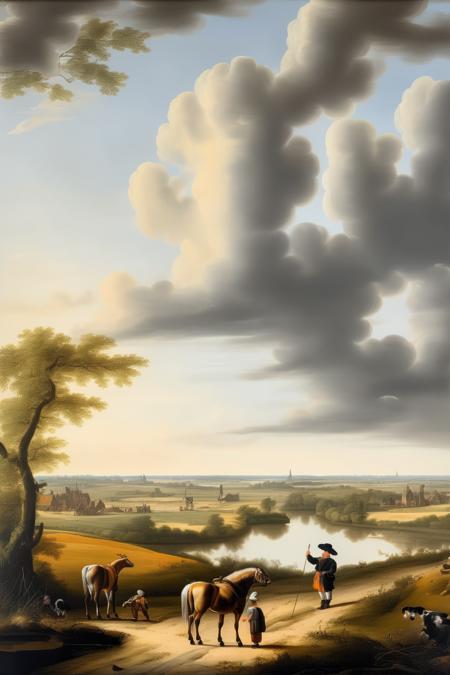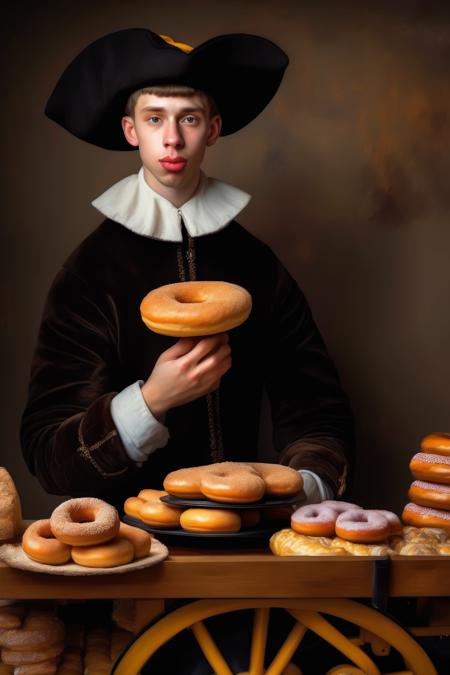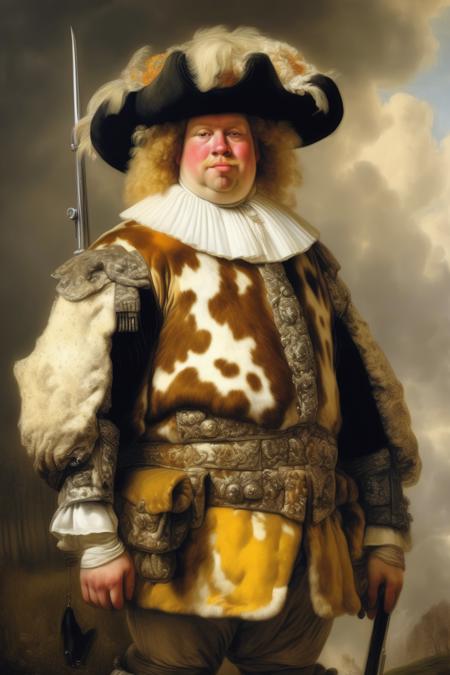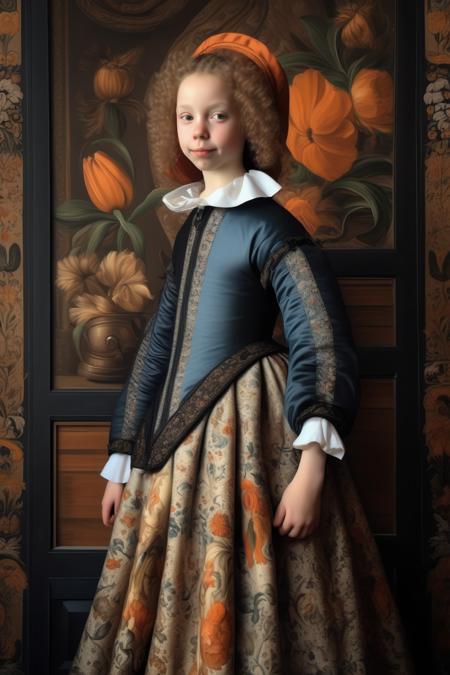Jan van Goyen Style (CivitAI
Jan van Goyen Style - James the son of Zebedee and his brother John, in the boat with their father Zebedee, mending their nets; and He called them. Immediately they left the boat and their father, and followed Him. Make sure you show them on the boat near the shore, in the style of rembrandt
Jan van Goyen was a Dutch painter from the 17th century, known for his landscape paintings that captured the essence of the Dutch Golden Age.
His style can be described as atmospheric and picturesque, with a focus on depicting the Dutch countryside, rivers, and coastal scenes. Van Goyen had a talent for capturing the changing light and weather conditions, using a muted color palette to create a sense of tranquility and harmony.
His landscapes often featured vast horizons, expansive skies, and small figures or architectural elements to provide a sense of scale. Van Goyen's brushwork was loose and expressive, with a focus on capturing the essence of the scene rather than intricate details.
He played a significant role in the development of Dutch landscape painting, influencing later generations of artists. Van Goyen's works exemplify the Dutch fascination with nature, the depiction of everyday life, and the mastery of capturing the beauty of the Dutch landscape.
Jan van Goyen's paintings continue to be admired for their timeless charm and their ability to transport viewers to the serene and picturesque landscapes of the Dutch Golden Age.
Image examples for the model:
Jan van Goyen Style - A painting of a dinner with a table full of vegetarian meat dishes in the style of Rembrandt
Jan van Goyen Style - A painting of a dinner party where the table is full of meat dishes in the style of rembrandt
Jan van Goyen Style - an oil painting of Jean de la Tour with young people playing cards with jellyfishs and crabs
Jan van Goyen Style - A realistic 17th-century landscape inspired by the works of Aelbert Cuyp. Capture the serene mood of the Dutch Golden Age with a vast open field stretching into the distance. Include rolling hills and a winding river that reflects the soft light of the setting sun. Pay attention to the details of the flora and fauna, showcasing the lush greenery and wildflowers of the countryside. The key focus should be on the dramatic clouds that fill the sky, casting shadows on the landscape below. Emphasize the play of light and shadow, creating a sense of depth and perspective. Use a combination of warm and cool tones to evoke the atmospheric conditions of the scene. For the camera setup, use a medium-format film camera, such as a Hasselblad 500CM, to capture the level of detail and tonal range present in Cuyp's paintings. Choose a wide-angle lens, such as a 35mm or 50mm, to encompass the vastness of the landscape and enhance the sense of depth. Set the aperture to a medium value, around f/8, to ensure a good balance between sharpness and depth of field. Consider using a tripod to maintain stability during the longer exposure times that may be necessary for optimal lighting conditions. Lastly, take your time to compose the shot, considering the rule of thirds and the placement of key elements within the frame. Aim to create a composition that captures the essence of Cuyp's landscape paintings while adding your own personal touch.
Jan van Goyen Style - vermeer painting of young man dressed as a dutch calvinist eating a donut next to a cart full of donuts
Jan van Goyen Style - An illustration from a painting by Rembrandt of a Simmental dressed as a soldier, 8k,dressed in noble clothing and expensive equipment
Jan van Goyen Style - One woman yelling and pointing finger, while other woman stands behind her in style of Rembrandt painting
Jan van Goyen Style - a girl. in the style of old dutch master. 17th century Dutch noble house interior background.
Jan van Goyen Style - A realistic 17th-century landscape inspired by the works of Aelbert Cuyp, Pieter de Molijn, Pieter Nicolaes Spierinckx, Nicolas Poussi, Jacob van Ruisdael. Capture the serene mood of the european Golden Age with a vast open field stretching into the distance. Include rolling hills and a winding river that reflects the soft light of the setting sun. Pay attention to the details of the flora and fauna, showcasing the lush greenery and wildflowers of the countryside. The key focus should be on the dramatic clouds that fill the sky, casting shadows on the landscape below. Emphasize the play of light and shadow, creating a sense of depth and perspective. Use a combination of warm and cool tones to evoke the atmospheric conditions of the scene. For the camera setup, use a wideangle to capture the level of detail and tonal range present in Cuyp's paintings. Choose a wide-angle lens, such as a 12mm or 35mm, to encompass the vastness of the landscape and enhance the sense of depth. Set the aperture to a medium value, around f/8, to ensure a good balance between sharpness and depth of field. Consider using a tripod to maintain stability during the longer exposure times that may be necessary for optimal lighting conditions. Lastly, take your time to compose the shot, considering the rule of thirds and the placement of key elements within the frame. Aim to create a composition that captures the essence of Cuyp's landscape paintings while adding your own personal touch
- Downloads last month
- 2
Model tree for KappaNeuro/jan-van-goyen-style
Base model
stabilityai/stable-diffusion-xl-base-1.0